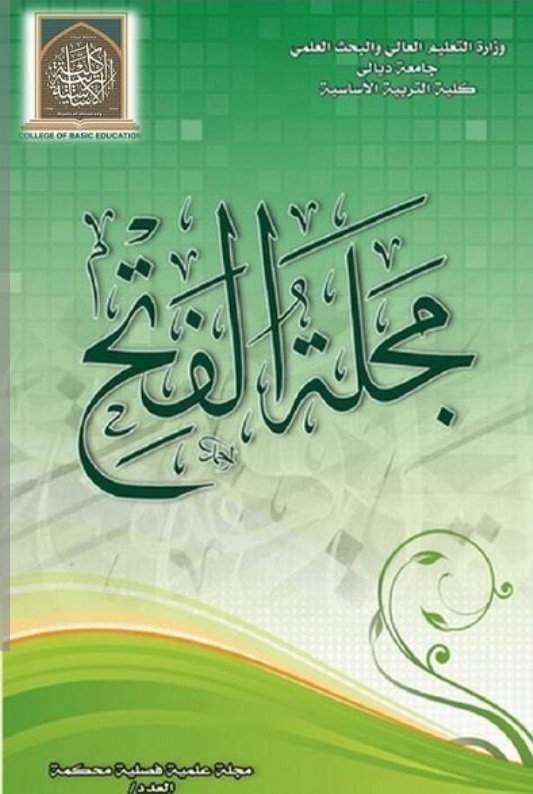Abstract
The study aims at identifying the effect of using molecular representation strategy of the substance in visual thinking skills for the fourth scientific preparatory students in chemistry. The sample of the study consists of (67) students selected from fourth scientific preparatory students and they have been distributed to the experimental groups (34) and a control group (33). The two groups were equivalent in :( previous information variables , chronological age in months , the rate of students scores in the previous year in chemistry , mental capacity, and visual thinking test. To achieve the aim of the current study, an instructional material has been prepared according molecular representation strategy, and the test of visual thinking skills which determined by (shape recognition skills , shape analysis skill, the skill of linking between relationships, the skill of ambiguity interpretation in visual form, extracting meanings skill).
It consisted of (44) items, after accounting the psychometric characteristics for both tests, the data were statistically accessed using SPSS as statistical program, the results showed that there are no statistically significant differences between the students of the experimental group who are taught according molecular representation strategy for the substance and the students of the control group who are taught according the traditional way, visual thinking skills in favor of the experimental group. Thus, the researcher recommends in adopting the molecular representation strategy for the substance in teaching chemistry, and he suggests further studies for different stages and for different subjects to check the effect of visual thinking skill.
It consisted of (44) items, after accounting the psychometric characteristics for both tests, the data were statistically accessed using SPSS as statistical program, the results showed that there are no statistically significant differences between the students of the experimental group who are taught according molecular representation strategy for the substance and the students of the control group who are taught according the traditional way, visual thinking skills in favor of the experimental group. Thus, the researcher recommends in adopting the molecular representation strategy for the substance in teaching chemistry, and he suggests further studies for different stages and for different subjects to check the effect of visual thinking skill.
Abstract
The study aims at identifying the effect of using molecular representation strategy of the substance in visual thinking skills for the fourth scientific preparatory students in chemistry. The sample of the study consists of (67) students selected from fourth scientific preparatory students and they have been distributed to the experimental groups (34) and a control group (33). The two groups were equivalent in :( previous information variables , chronological age in months , the rate of students scores in the previous year in chemistry , mental capacity, and visual thinking test. To achieve the aim of the current study, an instructional material has been prepared according molecular representation strategy, and the test of visual thinking skills which determined by (shape recognition skills , shape analysis skill, the skill of linking between relationships, the skill of ambiguity interpretation in visual form, extracting meanings skill).
It consisted of (44) items, after accounting the psychometric characteristics for both tests, the data were statistically accessed using SPSS as statistical program, the results showed that there are no statistically significant differences between the students of the experimental group who are taught according molecular representation strategy for the substance and the students of the control group who are taught according the traditional way, visual thinking skills in favor of the experimental group. Thus, the researcher recommends in adopting the molecular representation strategy for the substance in teaching chemistry, and he suggests further studies for different stages and for different subjects to check the effect of visual thinking skill.
It consisted of (44) items, after accounting the psychometric characteristics for both tests, the data were statistically accessed using SPSS as statistical program, the results showed that there are no statistically significant differences between the students of the experimental group who are taught according molecular representation strategy for the substance and the students of the control group who are taught according the traditional way, visual thinking skills in favor of the experimental group. Thus, the researcher recommends in adopting the molecular representation strategy for the substance in teaching chemistry, and he suggests further studies for different stages and for different subjects to check the effect of visual thinking skill.
